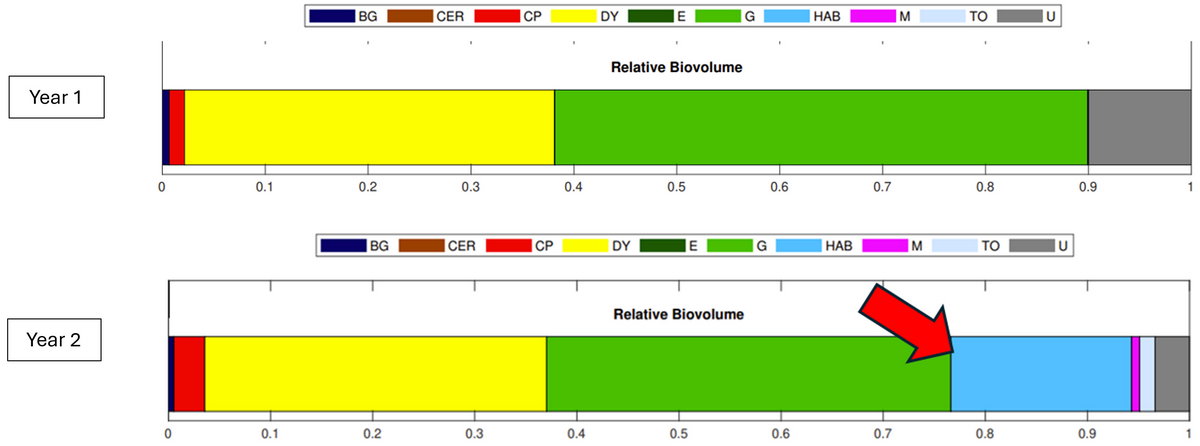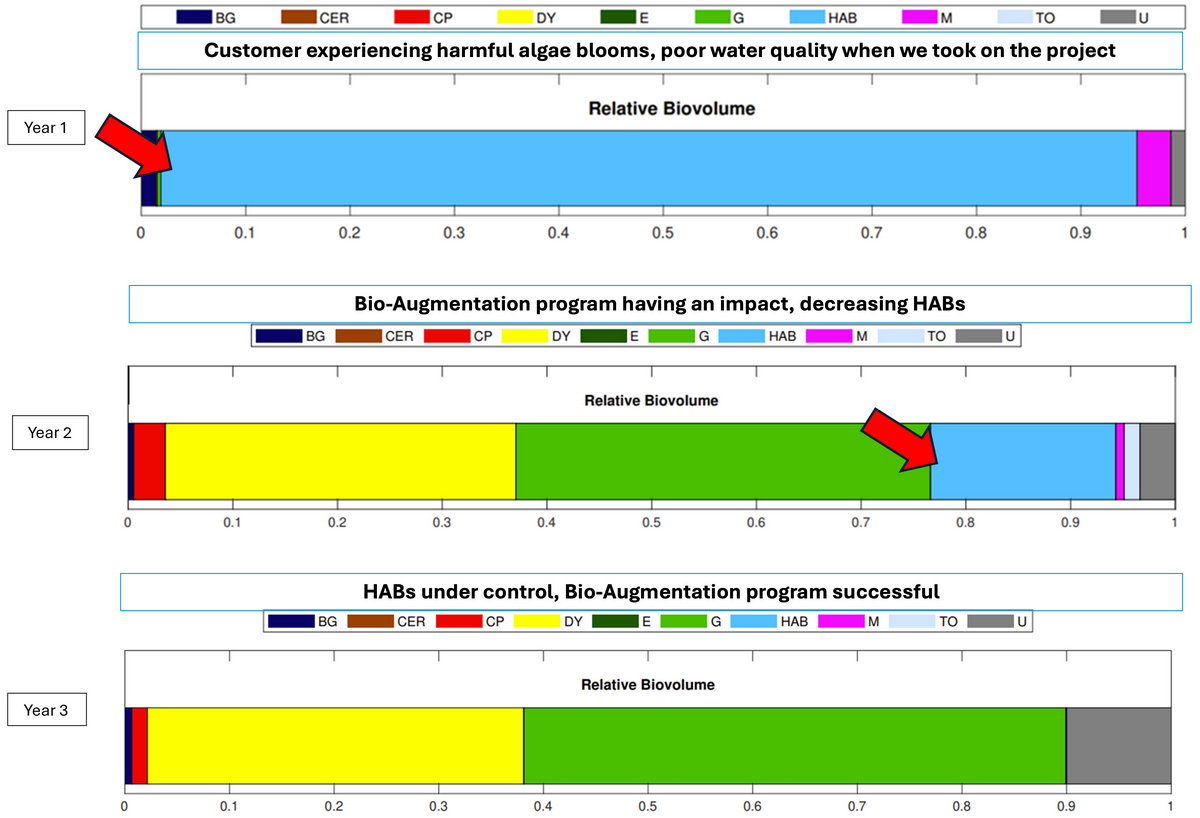PHYCOLOGICAL ANALYSIS
WHAT IS PHYCOLOGICAL ANALYSIS?
Phycology is the study of phytoplankton, which are the microscopic algae that form the base of the aquatic food web. In the context of lake management, we analyze phytoplankton populations to determine the levels of biodiversity and the quantity of phytoplankton present in the water body.
Why is phycological analysis important?
The quantity and composition of phytoplankton populations serve as key indicators of the degree of eutrophication and the overall health of the aquatic ecosystem.
In a healthy lake, phytoplankton populations are diverse, with a balance of different species that support a robust food web. However, as eutrophication progresses, certain species, particularly toxic cyanobacteria, begin to dominate, disrupting the ecological balance and leading to a degradation of water quality.
By monitoring phytoplankton populations, we can assess the severity of eutrophication, track changes over time, and evaluate the effectiveness of our remediation efforts.
This information is crucial for developing targeted bioaugmentation strategies and adapting our management approach to achieve the best possible outcomes.
How do you analyze phytoplankton?
Sampling phytoplankton is a relatively simple process. In fact, we sometimes train clients to collect phytoplankton samples and ship them to the lab to contain costs.
The procedure involves taking water samples from the lake, stabilizing them with a special preservative, and sending them to a laboratory for expert analysis. The laboratory uses microscopy and other advanced techniques to identify the various phytoplankton species present in the samples and quantify their abundance.
What does the analysis tell you?
Phycological analysis enables us to determine the extent to which eutrophication has progressed and how close the lake is to being dominated by toxic cyanobacteria. This information is crucial for developing effective bioaugmentation dosing regimens and other remediation strategies.
In addition, tracking changes in phytoplankton populations over time enables us to assess the effectiveness of our interventions and adapt our management approach as needed. For example, if we observe a shift towards greater biodiversity and a reduction in cyanobacteria abundance after implementing our remediation program, we can infer our efforts are having a positive impact on the ecosystem.
Here are some examples to illustrate the value of phycological data:
Bio-Diversity
Each type or taxa of phytoplankton has its own color. Pale blue is toxin producing HAB taxa. Ideally there should be good biodiversity, with many taxa present and not many HAB taxa. That is obviously not the case here.
Relative Volume
The Relative Biovolume shows how much of the total phytoplankton biovolume is made up by each type. Ideally there should be a high level of diversity and biovolume of beneficial algae and low levels of cyanobacteria and HAB taxa That is obviously not the case here.

Actual Volume
The actual total biovolume of all phytoplankton should not be too high. Here there are 142m units which is very high, and 49% is HABs.


PHYCOLOGICAL DATA EXAMPLES
1. High total phytoplankton biovolume and a high proportion of cyanobacteria indicate advanced eutrophication and a significant risk of harmful algal blooms. In this case, we would prioritize strategies to reduce nutrient inputs, increase oxygenation, and promote the growth of beneficial algae through bioaugmentation.

2. A sudden increase in cyanobacteria abundance, even if total biovolume remains relatively low, could signal the onset of a harmful algal bloom.

3. A gradual increase in phytoplankton biodiversity and a decrease in cyanobacteria proportion over time would indicate that our remediation efforts are successfully reversing eutrophication and restoring ecological balance.
This information informs a decision to continue with the current management approach or make minor adjustments to optimize results. In summary, phycological analysis is a powerful tool for understanding the complexities of aquatic ecosystems and guiding science-based decision-making in lake management.
By simplifying the concepts and highlighting the practical applications of this technique, we can help stakeholders appreciate the importance of monitoring phytoplankton populations and support the implementation of data-driven solutions for the long-term health and sustainability of their cherished water bodies.
Download the Lake Management ACTION Plan E-Book
Ready to explore how oxygenation can transform your lake? Download Clean-Flo’s Lake Management ACTION Plan E-Book to learn more about our innovative solutions, real-world results, and how we can help restore and protect your lake.
